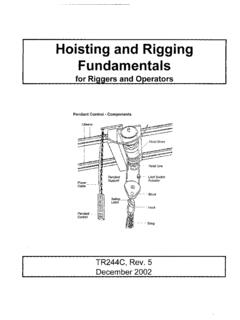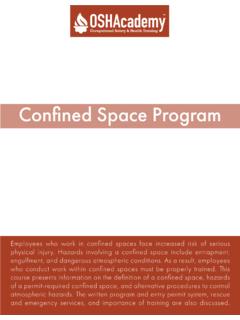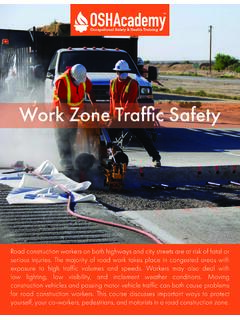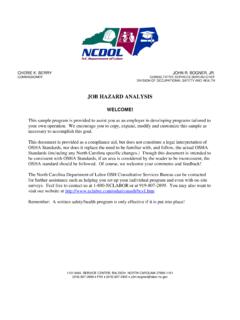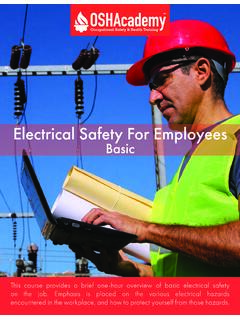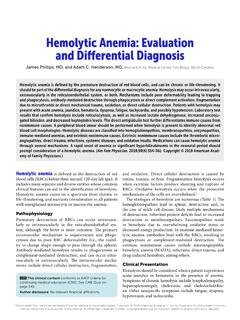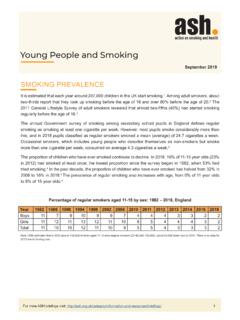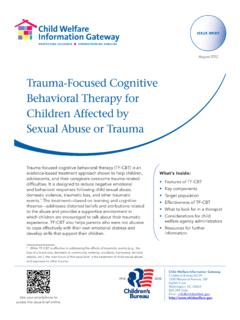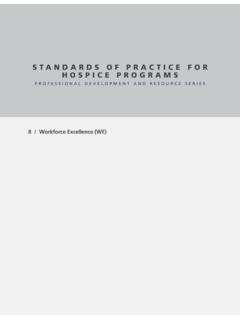Transcription of 711 Introduction to Ergonomics - OSHAcademy
1 When performing work in awkward postures or with excessive effort, you may experience fatigue, discomfort, and musculoskeletal disorders (MSDs). The basic principles of Ergonomics introduced in this course should be a vital component in every industry. This is especially true in the manufacturing, retail, and service industries where there is an increased rate and cost of ergonomic injuries. The main components in this course include risk factor identification, basic workstation design options, and hazard control strategies to eliminate or reduce those risk factors. Take this course prior to taking Course 722 Ergonomics Program to Ergonomics This page intentionally blank OSHA cademy Course 711 Study Guide Introduction to Ergonomics Copyright 2022 Geigle Safety Group, Inc.
2 No portion of this text may be reprinted for other than personal use. Any commercial use of this document is strictly forbidden. Contact OSHA cademy to arrange for use as a training document. This study guide is designed to be reviewed off-line as a tool for preparation to successfully complete OSHA cademy Course 711. We hope you enjoy the course and if you have any questions, feel free to email or call: OSHA cademy 15220 NW Greenbrier Parkway, Suite 230 Beaverton, Oregon 97006 + Disclaimer This document does not constitute legal advice. Consult with your own company counsel for advice on compliance with all applicable state and federal regulations. Neither Geigle Safety Group, Inc., nor any of its employees, subcontractors, consultants, committees, or other assignees make any warranty or representation, either express or implied, with respect to the accuracy, completeness, or usefulness of the information contained herein, or assume any liability or responsibility for any use, or the results of such use, of any information or process disclosed in this publication.
3 GEIGLE SAFETY GROUP, INC., DISCLAIMS ALL OTHER WARRANTIES EXPRESS OR IMPLIED INCLUDING, WITHOUT LIMITATION, ANY WARRANTIES OF MERCHANTABILITY OR FITNESS FOR A PARTICULAR PURPOSE. Taking actions suggested in this document does not guarantee that an employer, employee, operator or contractor will be in compliance with applicable regulations. Ultimately every company is responsible for determining the applicability of the information in this document to its own operations. Each employer s safety management system will be different. Mapping safety and environmental management policies, procedures, or operations using this document does not guarantee compliance regulatory requirements. Revised: February 3, 2022 This page intentionally blank Course 711 Contents Course Introduction .
4 1 What is Ergonomics ?.. 1 The Problem .. 1 An Important Strategy to Solve the Problem .. 1 Module 1: Defining Ergonomics .. 3 Introduction .. 3 Ergonomics & Risk Factors .. 3 Who is at risk? .. 4 Musculoskeletal Disorders (MSDs) .. 5 Factors Contributing to MSDs .. 6 Symptoms of Workplace Musculoskeletal Disorders (WMSDs) .. 6 The Impact of MSDs on Work .. 7 Module 2: Risk Factors Inherent in the Worker .. 9 Introduction .. 9 The Musculoskeletal System .. 9 Factors Inherent in the Worker - Age .. 10 Factors Inherent in the Worker - Gender .. 10 Factors Inherent in the Worker - Strength and Endurance .. 11 Factors Inherent in the Worker Physical Fitness .. 12 Repetition and Static Work Require Energy.
5 13 Factors Inherent in the Worker Anthropometry .. 13 Course 711 Module 3: Risk Factors Inherent in the Task .. 15 Risk Factors the Task Brings to the Job .. 15 Design to Reduce Risk Factors .. 15 Required Force .. 16 Lifting Posture Affects Risk of Injury .. 17 Force-Related Conditions .. 18 Vibration .. 19 Segmental Vibration .. 19 Whole Body Vibration .. 19 Duration of Vibration Exposure .. 20 Repetition .. 20 High Risk Repetition Rates by Different Body Parts .. 20 Duration .. 21 Recovery Time .. 22 Posture .. 22 Twisting and Force .. 23 Personal Real-World Example .. 24 Velocity/Acceleration .. 24 Heavy Dynamic Exertion .. 24 Module 4: Risk Factors Inherent in the Environment .. 26 Heat Stress.
6 26 Cold Stress .. 26 Lighting .. 27 Course 711 Noise .. 28 Psychosocial Risk Factors .. 29 Psychosocial Factors and MSDs .. 30 Module 5: Controlling Risk Factors .. 31 Eliminating Risk Factors .. 31 ergonomic Hazard Control Strategies .. 31 Elimination and Substitution .. 31 Engineering Controls .. 32 Workstation Design .. 32 Computer Workstations .. 33 Workspace Layout .. 35 Work Surfaces .. 35 Walking and Standing Surfaces .. 35 Seating .. 36 Storage .. 36 Work Fixtures and Tools .. 37 Work Environment .. 37 Administrative Controls .. 38 Common Examples of Administrative Control Strategies .. 38 Work Rates .. 39 Job Enrichment .. 39 Personal Protective Equipment .. 39 Interim Measures .. 40 Course 711 Safety System Improvements.
7 40 Course 711 Copyright 2022 Geigle Safety Group, Inc. Page 1 of 41 Course Introduction What is Ergonomics ? Ergonomics is a way of designing workstations, work practices, and work flow to accommodate the capabilities of workers. ergonomic design reduces risk factors known to contribute to occupational ergonomic injuries and illnesses, such as sprains and strains and cumulative trauma disorders (CTDs). If work is performed in awkward postures or with excessive effort, fatigue and discomfort may result. Under these conditions muscles, tendons, ligaments, nerves, and blood vessels can be damaged. Injuries of this type are known as musculoskeletal disorders (MSDs). The Problem The increased rate and high cost of ergonomic injuries and illnesses such as carpal tunnel syndrome, tendinitis, and MSDs cut across all industries and occupations.
8 Some of the hardest hit are manufacturing, retail, and service industries. Take a look at your OSHA 300 Log. You will probably notice that most (30%-50%) of your recordable injuries are somehow related to Ergonomics . MSDs can increase the cost of doing business both directly and indirectly. Direct costs may include medical services and higher workers compensation premiums. The direct cost to close an ergonomic -related workers compensation claim can average over $9,000. Indirect costs from increased employee turnover, absenteeism, and retraining may also occur. Productivity, product quality, and employee morale may also suffer. Estimates indicate that the indirect costs associated with MSDs may be four to 10 times higher than the direct costs.
9 Preventing and controlling ergonomic risk factors in the workplace often costs a fraction of what one such claim would cost. In smaller companies, one ergonomic -related claim can mean the difference between being above or below the profit margin. An Important Strategy to Solve the Problem OSHA and private consultants can provide customized presentations and training for groups and associations. An ergonomic consultation may include: workstation analysis and design; task-specific and company-wide risk factor assessment; training and education; development and implementation assistance for ergonomic programs; Course 711 Copyright 2018 Geigle Safety Group, Inc. Page 2 of 41 help prioritizing ergonomic needs; and/or answers to questions about current and possible regulatory requirements Course 711 Copyright 2018 Geigle Safety Group, Inc.
10 Page 3 of 41 Module 1: Defining Ergonomics Introduction Webster's New World Dictionary (College Edition) defines Ergonomics as "the study of the problems of people in adjusting to their environment; especially the science that seeks to adapt work or working conditions to suit the individual worker." The word " Ergonomics " is from Greek: "ergo" means "work," "nomics" means "laws pertaining to, or measure." Ergonomics is "the laws pertaining to work, the measure of work." Ergonomics may also be thought of as the science of fitting the job to the individual worker. When there is a mismatch between the physical requirements of the job and the physical capacity of the worker, musculoskeletal disorders (MSDs) can result.
